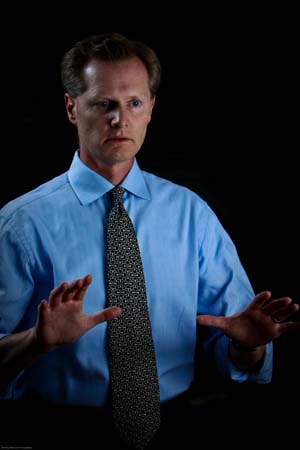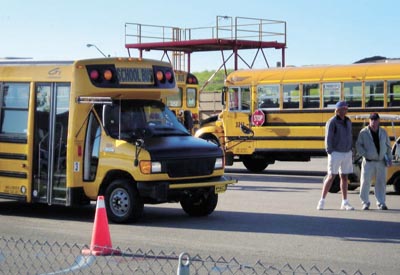
Despite the Silicon Valley’s slowed down economy over the past
few years, its recent gradual growth gives hope for a bright
future, an area expert proclaimed Tuesday in front of a large group
of San Benito County residents.
Despite the Silicon Valley’s slowed down economy over the past few years, its recent gradual growth gives hope for a bright future, an area expert proclaimed Tuesday in front of a large group of San Benito County residents.
Nearly 80 business and political leaders gathered at San Juan Oaks Golf Club on Tuesday to hear about how neighboring Silicon Valley is trying to thrive in the recent economic downturn and its effect on those in San Benito County.
Russell Hancock, chief executive officer and president of Joint Venture of Silicon Valley Network, spoke with local leaders for more than two hours, discussing the future of the area and its current economic standing. Hancock discussed his hope that the steady growth of the economy continued but stayed at a steady pace.
A sharp jump wouldn’t be sustainable, but a slow paced growth would extended and strengthen the community, he said during the luncheon.
Hosting the event were the Community Foundation for San Benito County, the San Benito County Chamber of Commerce, the Hollister Downtown Association and the Economic Development Corp. of San Benito County.
“People thought the Silicon Valley was its own unique place and would stay away from national economic trends,” Hancock said. “They were wrong – it really did affect us here.”
Defining the Silicon Valley as not a place but a “state of mind,” Hancock called the area an important piece for the future of California.
Going through a list of accomplishments, Hancock called the Silicon Valley and Joint Venture group, which consists of nearly 40 cities and four counties, a place of innovation.
“It’s a culture, it’s an institution and it’s a spirit of innovation,” he said.
With almost 15,000 residents leaving San Benito County every day to commute to work, Hancock spoke on the changing atmosphere in local corporations and how they are growing. A question-and-answer session followed the Hancock speech.
Hancock, whose company acts as forum for local, emerging leaders to gather and come up with solutions for the area’s economic issues, talked openly about the Silicon Valley’s struggles over the past few years.
The Silicon Valley featured a steep drop in Initial Public Offerings during the economic recession – from 23 in 2007 to only one in 2009. In 2010, the IPO number rose to 11.
Hancock expressed worry about the lack of people flooding into the area from other countries – slowing the infusion of bright and young innovators.
“People are deciding to stay home because the situation is getting better over there and here it’s not what it was,” he said. “We are no longer the golden place we once were.”
And all of those changes have caused a swift change to companies in the area.
Calling the area a “changing landscape,” Hancock warned of new business practices and an uncertain future.
“Corporations are no longer community oriented,” Hancock said. “They are global.”
Hancock said the new company trend is to be “lean, smaller and more flexible.” Using contracted work, instead of employees, local businesses are able to thrive – but local citizens and the community suffer.
He referred to the shrinking middle class and the growing low and rich classes as future worries in the Silicon Valley. And he warned of the shrinking venture capital markets.
“The venture capital markets are in a huge shake-up,” he said.
The markets have been cut in nearly half during the past 10 years – and it’s a trend he expects to continue, he said.
“It’s going back to the old way of doing things,” Hancock said.
Things are getting better, but don’t expect huge growth, he said.
“This is the economy we are going to get – and I like that,” he said. “It’s small steady growth.”
But to continue thriving in the new economic world, business and political leaders will need to meet, have conversations and partner with each other, he said. And San Benito County should thrive at that.
“If it can’t be done here, heaven help us,” he said. “There are less players and more space. It can be done here.”







